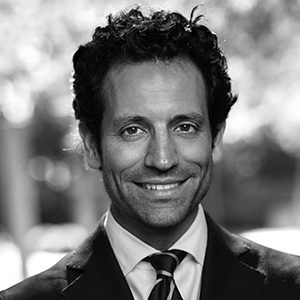
IESE Insight
When sky-high executive pay is a case of common ownership
Overpaying CEOs is a mechanism that floats all boats but undermines competition and leaves consumers paying more.
In 2022, the median pay for CEOs of S&P 500 companies — i.e., large U.S. publicly traded firms — was $16.7 million. Meanwhile, the average American was making less than $60,000 in total income.
Moreover, CEOs often received raises regardless of whether results would seem to justify it. How can this be?
A growing body of empirical evidence ties common ownership to reduced competition, and research recently published in the Journal of Political Economy by IESE’s Miguel Anton and Mireia Giné, with Florian Ederer of Boston University and Martin Schmalz of the University of Oxford, connects the dots between CEO compensation, increased common ownership of public companies, and incentives that discourage aggressive competition.
Mixed motives
Public companies’ largest shareholders hold the most influence on matters that go to shareholder votes, such as executive compensation, which may or may not be linked to company performance. These largest shareholders are often mutual funds and other asset managers, such as BlackRock, Vanguard and Fidelity in the United States. Such firms aim to maximize the value of their entire stock portfolio rather than the performance of individual firms.
When there is fierce competition in an industry, such as a price war in a key market, profit margins may fall industry-wide. This is bad news for common owners, as the success of one company they own may be counterbalanced by a hit taken by another. Their overall portfolio may, in fact, do better if “all boats rise together.”
Put simply, they have little incentive to encourage competition between those firms.
The authors cite ownership structures of various U.S. airlines as an example. Prior to a merger with Alaska Airlines in 2017, Virgin America was the only airline not to experience a high degree of common ownership, while all other airlines had the same overlapping owners as their largest shareholders.
Perhaps unsurprisingly, Virgin America was also the nine-time winner of a Top Domestic Airline award for price and quality. If common owners were benefiting from all airlines equally (except Virgin), what incentives did they have to ensure any one company functioned to the best of its ability? Virgin, meanwhile, had only its own shareholders to please, and it competed accordingly.
High salaries float all boats
But are major shareholders really calling the shots at big firms, to the point that they are undermining productivity and competition? Apart from the conspiratorial sound of this theory, company structure has raised doubts.
After all, shareholders don’t call the shots on matters such as pricing; executives do — and often, in fact, it’s middle managers who do. Managers may not even know their firm is commonly owned with a competitor’s, and they have to respond to performance-based incentives of their own.
Yet it’s also true that when firms are commonly owned, CEO pay packages contain more guaranteed income and are less incentive-based. Here, the authors propose CEO remuneration as a mechanism by which common ownership dampens competition, without requiring collusion at multiple levels of management.
A 2016 report by Proxy Insight, which was widely reported at the time, showed that major shareholding companies such as BlackRock, Vanguard and Fidelity vote to approve executive compensation packages around 96% of the time.
By pushing through raises and allowing CEOs to enjoy “the quiet life,” these measures dissociate pay from performance and allow top executives to coast through life without engaging in strong competition with fellow firms.
Competition becomes softer and the price of this, whether through higher product prices or loss of productivity through enhancements that have not been made, is passed on to consumers.
It’s more a case of neglect than conspiracy, the authors assert. Their mechanism “requires neither communication/coordination between shareholders, managers or firms, nor market-level interventions by shareholders or even top managers.”
In contrast, “common ownership mechanisms that require active common owner interventions and assume away agency problems and delegation within organizations generate predictions that are at odds with empirical evidence.”
Excessive executive pay is of high concern to shareholders and also to society. This paper provides a fascinating glimpse of how, even in the absence of direct interference in the day-to-day running of a firm, owners’ interests can trickle down through complex hierarchies and affect pricing and productivity. This has strong implications for antitrust enforcers, such as the U.S. Department of Justice, the Federal Trade Commission or the European Commission, who may need to reconsider the underlying reasons for the anticompetitive effect when designing antitrust and competition policies.
The methodology
The authors analyzed the design of optimal managerial incentive contracts in hierarchical multi-product firms that strategically compete against each other but may share common owners.


